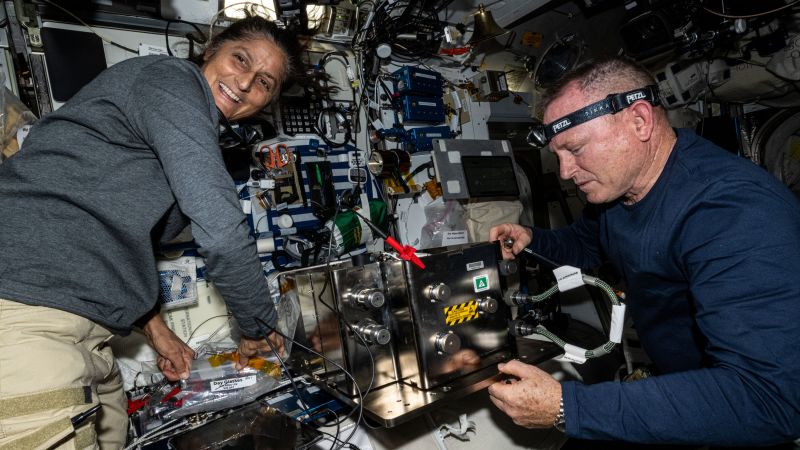On Tuesday, NASA made an announcement regarding the potential early return of astronauts Butch Wilmore and Suni Williams from the International Space Station (ISS) following their extended stay that has stretched for several months longer than originally planned. Both astronauts were part of Boeing’s Starliner’s inaugural crewed test flight, and their return could happen a couple of weeks sooner than the previously projected timeline. This adjustment stems from a change in the flight schedule concerning the upcoming Crew-10 mission, which is set to use a SpaceX Crew Dragon capsule. The revised launch date is earmarked for March 12, pending the mission’s readiness.
The crucial aspect of this timing is that the Crew-10 astronauts must reach the ISS before Wilmore and Williams, who are currently assigned to the earlier Crew-9 mission, can complete their rotation and head back to Earth. NASA clarified that the Crew Dragon vehicle, known as Freedom, which is presently docked at the ISS, is designated for a return that will take place after a brief handover period following Crew-10’s arrival.
This announcement has generated considerable media attention, particularly in light of the prior confusion created by comments from notable figures like SpaceX CEO Elon Musk and former President Donald Trump regarding the astronauts’ situation. Musk posted on X (previously Twitter) that Trump had directed him to ensure the swift return of Williams and Wilmore, suggesting a sense of urgency and responsibility that seemed to imply a change in plans. Musk’s public statements included a critique of the Biden administration for the extended duration that Williams and Wilmore spent aboard the space station, which he characterized as “terrible.”
However, it’s essential to note that NASA had announced its intention to utilize a SpaceX vehicle for the return of Wilmore and Williams as early as August, which predates Musk and Trump’s comments. This indicates that NASA had a clear and pre-planned approach to the situation long before the recent public discourse surrounding it.
Initially, NASA had anticipated launching the Crew-10 mission with a newly constructed Crew Dragon capsule as early as February. However, complications arose that required additional processing time, pushing the Crew-10 mission’s launch schedule into March, which consequently delayed Wilmore and Williams’ return from February to late March. With NASA’s latest announcements, the agency now plans to utilize the Crew Dragon Endurance, which has already completed three prior missions, including the Crew-7 mission that returned to Earth in March 2024 after a notable seven-month duration spent at the ISS.
Wilmore and Williams have been stationed aboard the ISS since June, piloting Boeing’s Starliner during its first crewed mission. Their initial timeline was to spend about one week at the ISS, but challenges cropped up, including issues with helium leaks and propulsion that NASA and Boeing worked to address following the spacecraft’s arrival at the station. Given the risks, NASA officials decided that a return via Starliner was too perilous. During their extended mission, they have been officially considered members of the ISS staff.
As the Crew-10 mission gears up to facilitate their return, it includes an impressive lineup of spaceflights: NASA astronauts Anne McClain and Nichole Ayers; astronaut Takuya Onishi from the Japan Aerospace Exploration Agency; and Russian cosmonaut Kirill Peskov. This transition will bring new responsibilities to the Crew-10 astronauts as they embark on their mission while enabling Wilmore and Williams to come back to Earth after their protracted stay in low-Earth orbit.
In conclusion, the developments surrounding the return timeline of astronauts Wilmore and Williams illustrate the complexities of crewed space missions. With evolving schedules and an intention to prioritize safety, NASA aims to maintain its commitment to human spaceflight while ensuring efficient crew rotations aboard the ISS.












